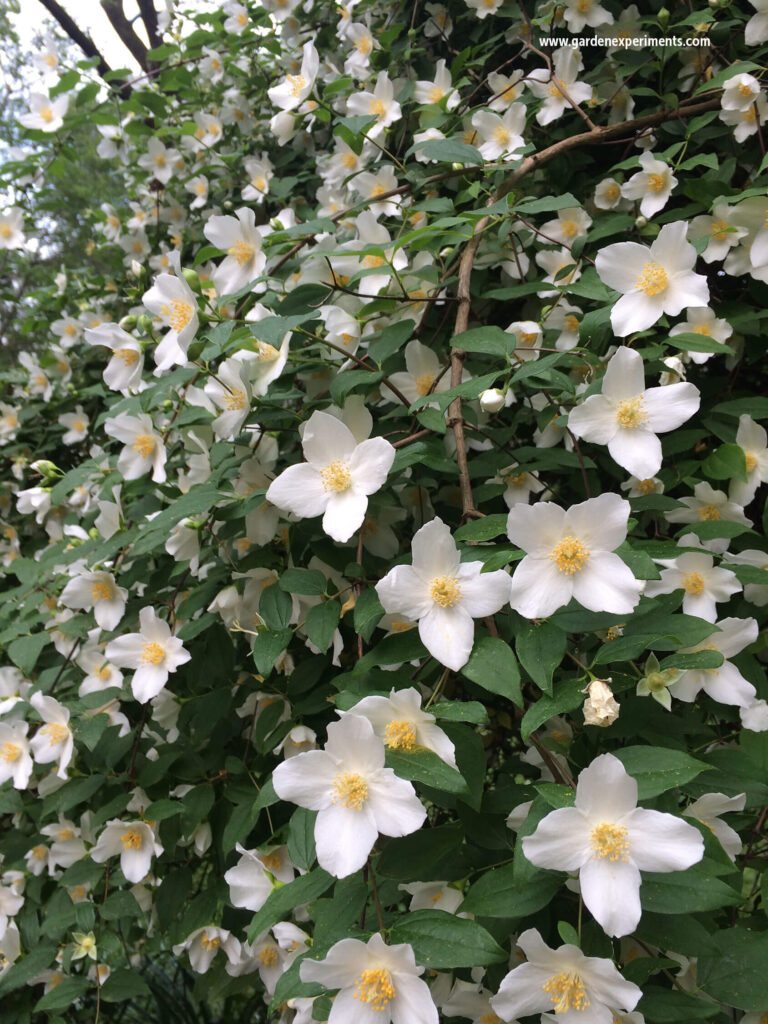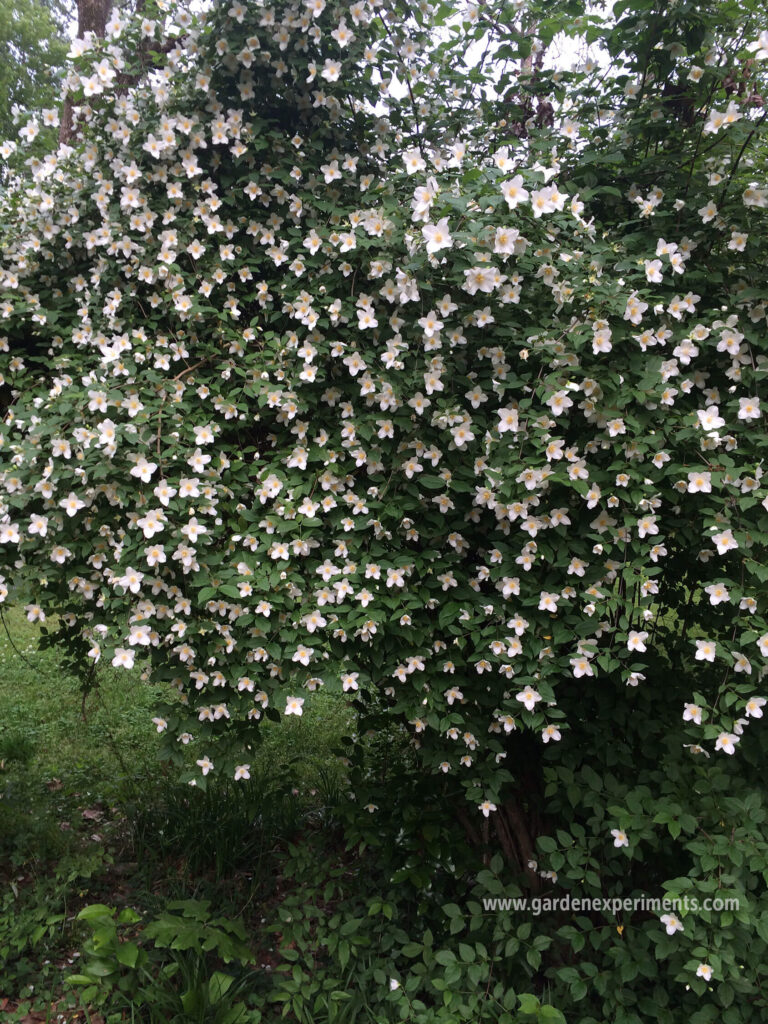In late spring and early summer, scentless mock orange (Philadelphus inodorus) is covered with bright white, 4-petaled flowers with a yellow center.
These deciduous shrubs make a great privacy screen and are easy to grow. They can reach a height of 12 feet, so prune them back in summer, just after the flowers are over. (The blooms are produced on the previous year’s growth.)
Scentless mock orange is hardy in USDA zones 5 to 10. It is deer-resistant, drought-tolerant, heat-tolerant, and low maintenance.
Native Range of Scentless Mock Orange
This beautiful, woody shrub grows along the edges of streams, in the woods, and in other moist soil areas. It is native to the eastern and central states – generally found in the mountains. It grows in part shade or full sun.
This shrub is deciduous, but when the leaves have grown back in the late spring, it produces an abundance of gorgeous white flowers.
Plant Description
Leaves are oppositely arranged, and the shrub can grow to 12 feet. The bark is a light brown and can appear a little “shaggy.” The flowers are an inch or two in size, but they are astounding en masse.
The rest of the year, after the blooms, the shrub is a bit nondescript, and it will require frequent trimmings to keep it from taking over as it will grow from runners underground. It’s a bit unruly, in my experience.
Propagation of Scentless Mock Orange
If you know someone who has this shrub, you can propagate it from cuttings by rooting them directly in soil.
Despite the unruliness of the shrub itself, the blooms are so pretty, it makes it a worthwhile addition to the garden. Just be sure to keep it contained!

Wildlife Value
This shrub attracts large numbers of native bees.


